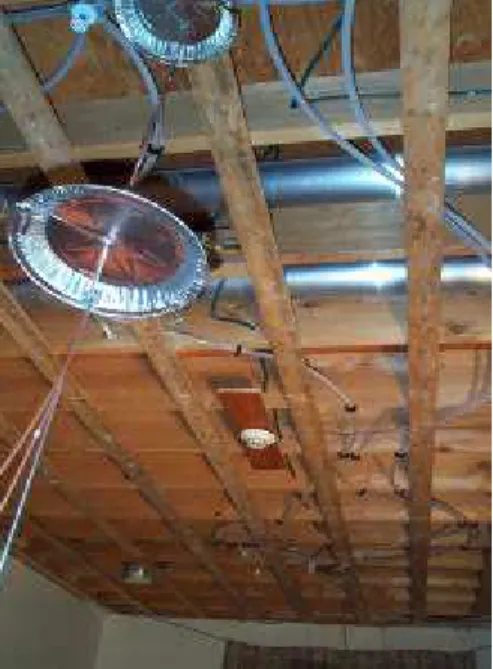Publisher’s version / Version de l'éditeur:
Construction Canada, 44, May 3, p. 54, 2002-05-01
READ THESE TERMS AND CONDITIONS CAREFULLY BEFORE USING THIS WEBSITE.
https://nrc-publications.canada.ca/eng/copyright
Vous avez des questions? Nous pouvons vous aider. Pour communiquer directement avec un auteur, consultez la première page de la revue dans laquelle son article a été publié afin de trouver ses coordonnées. Si vous n’arrivez pas à les repérer, communiquez avec nous à PublicationsArchive-ArchivesPublications@nrc-cnrc.gc.ca.
Questions? Contact the NRC Publications Archive team at
PublicationsArchive-ArchivesPublications@nrc-cnrc.gc.ca. If you wish to email the authors directly, please see the first page of the publication for their contact information.
NRC Publications Archive
Archives des publications du CNRC
This publication could be one of several versions: author’s original, accepted manuscript or the publisher’s version. / La version de cette publication peut être l’une des suivantes : la version prépublication de l’auteur, la version acceptée du manuscrit ou la version de l’éditeur.
Access and use of this website and the material on it are subject to the Terms and Conditions set forth at
Sprinkler testing at Kemano
Su, J. Z.
https://publications-cnrc.canada.ca/fra/droits
L’accès à ce site Web et l’utilisation de son contenu sont assujettis aux conditions présentées dans le site LISEZ CES CONDITIONS ATTENTIVEMENT AVANT D’UTILISER CE SITE WEB.
NRC Publications Record / Notice d'Archives des publications de CNRC: https://nrc-publications.canada.ca/eng/view/object/?id=5ef8c480-7a9c-485b-a2e9-40f51fa72f8b https://publications-cnrc.canada.ca/fra/voir/objet/?id=5ef8c480-7a9c-485b-a2e9-40f51fa72f8b
Sprinkler testing at Kemano
Su, J.Z.
A version of this document is published in / Une version de ce document se trouve dans : Construction Canada, v. 44 ,no. 3, May 2002, p. 54
www.nrc.ca/irc/ircpubs
Sprinkler Testing at Kemano
By Joseph Z. Su
Kemano Village in northern British Columbia was a company town owned by Alcan Smelters and Chemicals Ltd. This remote village had recently been closed as a result of restructuring power operations. Alcan donated more than 60 houses in the village to the provincial government’s fire services for the purposes of training firefighters and fire investigators and conducting fire studies. The project was known as the Kemano Public Safety Initiative (KPSI).
KPSI provided a unique opportunity to conduct fire experiments in residential dwellings. At Kemano, the National Research Council of Canada (NRC) and an industry partner completed a series of fire experiments in a residential dwelling to better understand performance issues relating to cross-linked-polyethylene (PEX-a) pipe sprinkler systems. This was done using fire scenarios typical to those found in residential fires.
The family dwelling used for fire experiments was a wood-framed single house. This bi-level dwelling had two bedrooms, a bathroom, a kitchen, and a living and dining room on the ground floor. The basement contained two bedrooms, a bathroom, a recreation room and a utility room. NRC conducted two experiments with a fire originating in the
recreation room, one experiment with a fire originating in the ground floor bedroom and one experiment with a fire originating in the living room with fuels typically found in occupied residences.
A sprinkler system for the test house was designed and installed by the industry partner for fire experiments in accordance with NFPA 13D, Standard for the Installation of Sprinkler Systems in One- and Two-Family Dwellings and Mob```````ile Homes. The system used commercial quick response sprinkler heads with a temperature rating of 68.3 C (155 F). Each sprinkler head was connected onto a multi-port fitting with connections to four water pipe lines. The cross-linked-polyethylene pipes (with a diameter of 12.7 mm) were rated for 160 psi at 73.4 F, 130 psi at 120 F, 100 psi at 180 F and 80 psi at 200 F.
One of the performance issues investigated was the behaviour of unprotected pipes under fire conditions. This was studied in the two tests conducted in the basement recreation room (5.85 m long, 3.70 m wide and 2.30 m high). The entire ceiling of the recreation room was torn down to expose wood joists (the cavity of open wood joists gave an additional 0.25 m to the room height).
Two sprinkler heads, along with the PEX-a pipes and fittings, were installed on the open wood joists, spaced at 3.55 m apart. The PEX-a pipes and fittings were all exposed without shielding.
Information gathered from the experiments included temperatures at various locations, activation times of sprinklers and various detectors, concentrations of carbon monoxide and carbon dioxide, and video records of the experiments. The temperatures were
measured at the fire locations, beside sprinkler heads, below sprinkler heads, at the egress route, in the cavity of open wood joists, in the attic space, as well as on the surface of unprotected cross-linked-polyethylene pipes. Detectors used included smoke alarms, heat detectors and carbon monoxide detectors.
In one house, the National Research Council of Canada (NRC) and an industry partner tested the performance of crosslinked polyethylene (PEX-a) pipe sprinkler systems. In all four experiments, a single sprinkler head actuated and it controlled and contained the fire. Firefighters were sent into the house 10 minutes after sprinkler activation to put out the fire. The exposed pipes and fittings were not damaged during the fire experiments in the recreation room. NRC researchers are still analyzing the experimental data. The outcomes of the project will guide further studies with an increased fire challenge to the system.
Table 1 – Experiment Matrix
Test No. Fire Location Fuel Door
1 basement recreation room corner wastebasket + curtain + sofa + end table close 2 basement recreation room centre under
pipes
upholstered chair close 3 ground floor bedroom corner mattress + box + bedding open 4 ground floor living room corner sofa + chair + end table none
Dr. Joseph Su of the National Research Council can be reached at (613) 993-9616 or by e-mail at joseph.su@nrc.ca.
